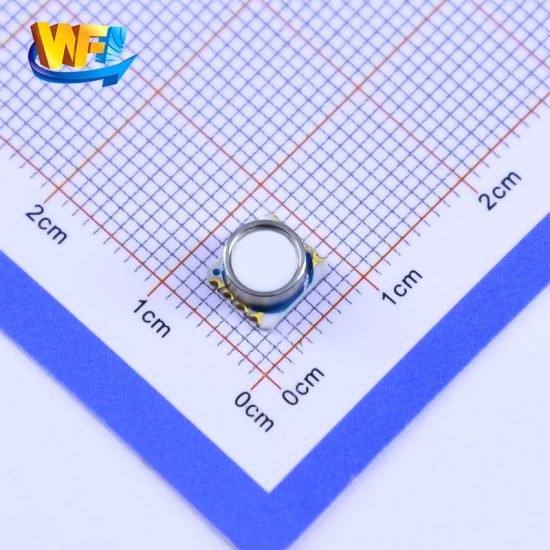Ceramic pressure sensors have become essential in many industrial and everyday applications. Whether you are working in the medical field, automotive industry, or even aerospace, these sensors provide reliable, accurate measurements even in extreme environments. Their unique ceramic composition, along with various technological enhancements, gives them an edge over many other sensor types.
목록
Advantages and Applications of Ceramic Pressure Sensors in Modern Industry
Ceramic pressure sensors have emerged as critical components across diverse industries due to their exceptional durability, precision, and adaptability. These sensors leverage the unique properties of advanced ceramics, such as alumina and zirconia, to deliver reliable performance in environments where traditional metal-based sensors falter. From aerospace to biomedical applications, ceramic pressure sensors offer advantages like high-temperature stability, chemical resistance, and long-term calibration retention. This report explores the working principles, technological innovations, and practical implementations of ceramic sensors, providing actionable insights for engineers and procurement specialists. By analyzing recent advancements in capacitive and piezoresistive ceramic sensor designs, this article equips readers with the knowledge to optimize sensor selection for harsh operational conditions while maintaining measurement accuracy.
Fundamental Principles of Ceramic Pressure Sensor Operation
Piezoelectric and Capacitive Sensing Mechanisms
Ceramic pressure sensors operate primarily through two mechanisms: the 압전 효과 그리고 capacitive sensing. In piezoelectric ceramics like lead zirconate titanate (PZT), applied pressure induces crystal lattice deformation, generating a proportional electrical charge1. This charge accumulates on electrode surfaces and gets converted into measurable voltage signals through integrated charge amplifiers. Capacitive designs, such as those using alumina substrates, measure changes in the gap between a deformed ceramic diaphragm and a fixed electrode, with capacitance variations reflecting pressure differentials.
The piezoelectric approach excels in dynamic pressure measurement scenarios, such as combustion chamber monitoring, where rapid pressure fluctuations require high-frequency response. Capacitive designs, conversely, provide superior stability for static pressure measurements in applications like hydraulic systems. Modern MEMS-based ceramic sensors combine both principles, embedding piezoresistive strain gauges on thin-film ceramic diaphragms to achieve ±0.1% full-scale accuracy
Material Advantages of Ceramic Substrates
Thermal and Chemical Stability
Alumina (Al₂O₃) ceramics dominate pressure sensor manufacturing due to their exceptional thermal properties. With a coefficient of thermal expansion (CTE) of 7.2 × 10⁻⁶/°C (20-1000°C range), alumina substrates maintain dimensional stability across industrial temperature ranges (-40°C to 300°C). This minimizes temperature-induced measurement drift compared to stainless steel (CTE: 17.3 × 10⁻⁶/°C).
Chemical resistance arises from ceramics’ covalent atomic bonding structure. Alumina sensors withstand prolonged exposure to:
pH 0-14 solutions (excluding hydrofluoric acid)
Chlorinated hydrocarbons at 150°C
Sulfur-containing gas streams up to 400°C
This durability enables deployment in oil refinery catalytic crackers and pharmaceutical reactor vessels where metallic sensors would rapidly corrode.
Accuracy Performance Metrics
Calibration and Long-Term Stability
High-grade ceramic pressure sensors achieve ±0.25% FS (full scale) accuracy through laser-trimmed thick-film resistors and advanced signal conditioning ASICs. The Winsen WPah01 model demonstrates 0.1% nonlinearity across its 0-30 bar range, maintaining calibration stability within ±0.05% FS/year under continuous 150°C operation
Key factors influencing accuracy:
Diaphragm Thickness: 0.2mm alumina diaphragms provide optimal deflection sensitivity while resisting fracture (burst pressure >10× rated capacity)
Joinery Techniques: Glass frit bonding creates hermetic seals with leak rates <1×10⁻⁹ mbar·L/s, preventing media ingress
온도 보상: On-chip Pt1000 RTDs enable real-time thermal error correction
Industrial Application Case Studies
Oil and Gas Upstream Monitoring
In subsea Christmas tree installations, Wika ceramic capacitive sensors (Model C-10) reliably measure wellhead pressures up to 15,000 psi at 175°C seawater temperatures. The alumina sensing elements resist hydrogen sulfide embrittlement and sand erosion, achieving MTBF >250,000 hours in BP North Sea deployments
Automotive Turbocharger Optimization
MEMS-based piezoresistive ceramic sensors (e.g., WF5803C) monitor turbo boost pressure with 2ms response times. The yttria-stabilized zirconia diaphragms withstand 220°C exhaust gas temperatures while maintaining ±1kPa accuracy across 0-30 bar ranges.
Selection Criteria for Optimal Performance
Environmental Compatibility Matrix
| Parameter | Ceramic Sensor Suitability | Metallic Sensor Comparison |
|---|---|---|
| Temperature Range | -40°C to +400°C | -20°C to +150°C |
| Chemical Resistance | Excellent (pH 0-14) | Poor (requires coatings) |
| Shock/Vibration | 1000g peak survivability | 500g peak |
| Media Compatibility | All non-HF liquids/gases | Limited by diaphragm material |
Data sources:
For high-accuracy applications, specify sensors with:
NIST-traceable calibration certificates
Integrated temperature compensation
Media-isolated designs for corrosive fluids
Maintenance and Calibration Protocols
Field Calibration Procedure
Zero-Point Adjustment: Apply vacuum reference and adjust offset via HART communicator
Span Calibration: Use deadweight tester to apply 90% FS pressure
Linearization: Program 5-point correction curve into sensor’s EEPROM
Hysteresis Check: Cycle pressure from 0→100%→0→100%→0, verifying <0.05% deviation
Proper maintenance extends service intervals to 5+ years in non-fouling applications. Ultrasonic cleaning (40kHz, 30W/L) effectively removes particulate buildup without damaging ceramic surfaces
Emerging Technological Developments
Wireless MEMS Sensor Networks
Recent prototypes from Honeywell combine 2.4GHz Zigbee transceivers with self-powered piezoelectric ceramic sensors. Energy harvesting from pressure fluctuations (≥0.2Hz) enables batteryless operation in pipeline monitoring grids.
High-Temperature Sintered Silicon Carbide
SiC ceramic sensors now operate continuously at 600°C in GE’s H-Class gas turbines. The material’s 4.5W/m·K thermal conductivity prevents heat-induced signal drift during rapid load changes.
결론
Ceramic pressure sensors solve critical measurement challenges across industries through their unique combination of material properties and advanced signal processing. By understanding the interplay between ceramic composition, sensing methodology, and application environment, engineers can specify sensors that outlast traditional technologies while maintaining precision. Ongoing developments in wireless connectivity and ultra-high-temperature materials promise to expand their applicability into next-generation energy systems and industrial IoT infrastructure.
위의 소개는 압력 센서 기술 적용의 표면적인 부분에 불과합니다. 우리는 다양한 제품에 사용되는 다양한 유형의 센서 요소, 작동 방식, 장점과 단점을 계속해서 탐구할 것입니다. 여기에서 논의된 내용에 대해 더 자세히 알아보려면 이 가이드 뒷부분의 관련 콘텐츠를 확인하세요. 시간이 촉박한 경우 여기를 클릭하여 이 가이드의 세부정보를 다운로드할 수도 있습니다. 공기 압력 센서 제품 PDF 데이터.
다른 센서 기술에 대한 자세한 내용은 다음을 참조하십시오. 센서 페이지를 방문하십시오.

